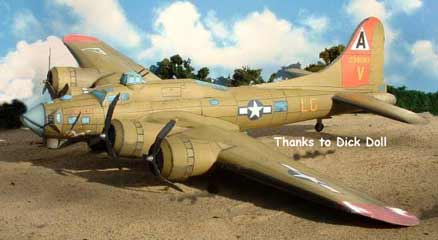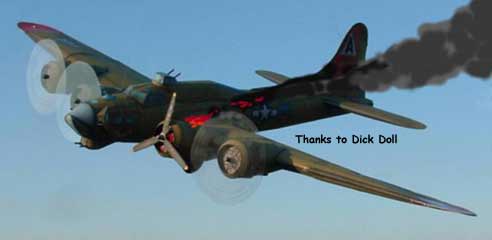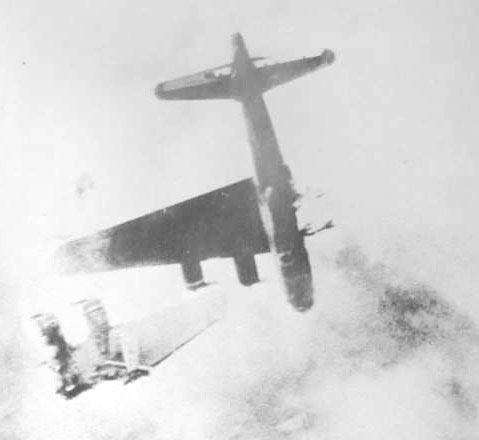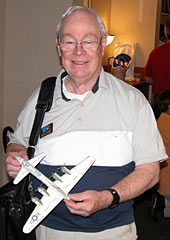



The Legendary Boeing B-17 Flying Fortress of WWII
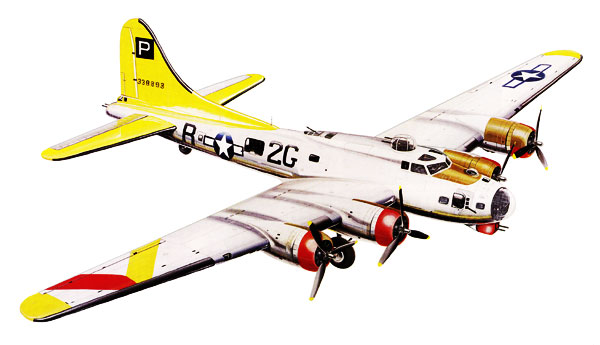
BOEING B-17F FLYING FORTRESS (1941).
The B-17 Flying Fortress was designed in 1934, then made its first flight on July 28,1935, but wasn't ready for delivery until March 1940.
Hoisting a deadly load of bombs into the frozen skies, the B-17
Flying Fortress was the United States' workhorse heavy bomber during
the WWII. B-17s served around the globe, but they are 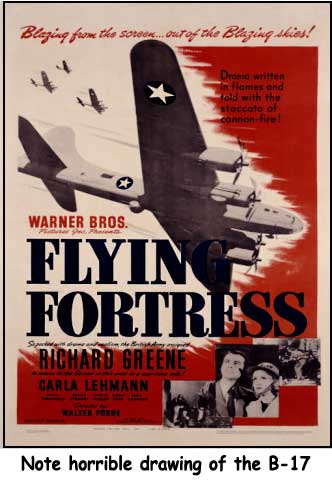 perhaps most
famous for their Eight Air Force daylight strategic bombing raids
on Germany. Flying in close formation and bristling with machine
guns, the 'Forts' battled through storms of anti-aircraft fire and
swarms of German fighters to reach their targets.
perhaps most
famous for their Eight Air Force daylight strategic bombing raids
on Germany. Flying in close formation and bristling with machine
guns, the 'Forts' battled through storms of anti-aircraft fire and
swarms of German fighters to reach their targets.
The B-17 was slower than it's counterpart bomber, the B-24 Liberator.
It carried fewer bombs and couldn't fly as far as the B-24. Yet,
because of the B-17s sturdy and stout design, its crews trusted
their aircraft believing that their 'Forts' wouldn't let them down.
B-17s returned to England daily with their noses blown open, tails
gashed and wings riddled with flack damage. Often they touched down
with one or two oil-streaked engines stone cold, with the remaining
engines moaning under the strain.Many crews felt that they owed
their lives to 'the old bird' that just wouldn't give up.. As many
as 12,731 Flying Fortresses were built.
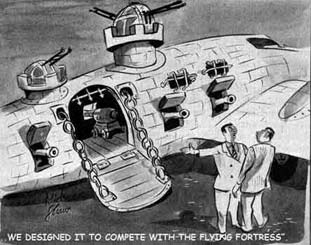 The
FG B-17 is a goodie of the first order. Would I be too far
off in saying that FG is positioning itself to give the paper
model companies in the old world a run for their money? Surely
looks that way from this part of the swamp. Best entertainment
money that I have ever spent
The
FG B-17 is a goodie of the first order. Would I be too far
off in saying that FG is positioning itself to give the paper
model companies in the old world a run for their money? Surely
looks that way from this part of the swamp. Best entertainment
money that I have ever spent
Thank you so much for publishing this model. Your timing is perfect. My neighbor's Dad was a navigator on a B-17 and he just published his memoirs:
'Return From Berlin - The Eye of a Navigator' by Robert Grilley,University of Wisconsin Press. I will be building this model as a gift to honor him. I can hardly wait to get home to download the model and start building. JimGausman
Whoooooaaa Chip!!!! I certainly don't want to give you a big head- but you guys did another great job on the '17!!!! My modem is still smoking from the download....
Thanks for another great model.. my real estate agent also thanks you as I will be shortly looking for a new home with enough room for these things!!! Most appreciatively, Von Ric
I just downloaded the B-17!! Looks beautiful. Thanks for creating this beauty. Your biggest fan, Anthony Sanchez
Here I am seeing what mail came in today and, LOL, a big envelope from Fiddlersgreen! Inside the marvelous B-17! Chip and gang (all you lovely assistants) you guys really know how to lift a fellah's spirits... James Duckworth
I would like to say your B-17 is astounding! That'll really wow them at my model group! I do love your old designs, but seeing the work of late I truly marvel at the skill and craftsmanship that goes into designing your models. . Keep up the brilliant work! Derek
I purchased the green B-17. I am enjoying it. I did find one small mistake. The engines on a B-17 are studebaker built wright-cyclone, nine cylinder, R-1820-97 developing 1200 h.p. each. I know this for a fact because I work on the "TEXAS RAIDERS" B-17g, gulf coast wing, caf Colonel Robert W. Oden (7/06)
I am an RC airplane modeler and recently came across your planes and thought that they would make very nice plans for a larger model. Particularly the B-17 :) I first took the PDF file to a printing place and told them to blow it up 376% from what I thought what was originally a 25.5" model which would make it a blown up 8' model. But when all was said and done I noticed that it was too small and not 8'. I then printed out the original plans and noticed that it does not seem to print out to the scale of a 25.5" wing span, but that of around 19" or 20". Where this is giving me problems, is when I take them to a printing place to have them blow them up for a large model I cant give them a correct scale to go by. Any help would be greatly appreciated, Gary Jones
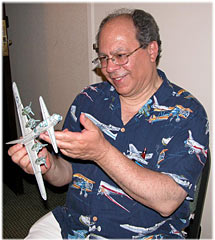 Meet Hank Caruso, the Grand Master of Aviation Paintings. |
|
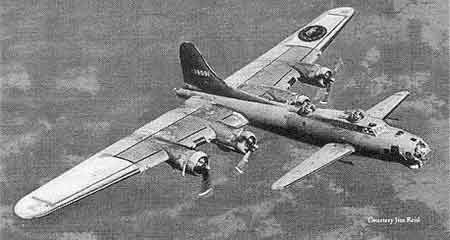 Great fun taking part of a model and creating a new one. OR, parts from a bunch of models and creating a monster.. |
|
Boeing B-17 Flying Fortress and Pearl Harbor

The B-17 Fortress flew through frost, flak, fire and fear to set a combat record which in terms of sheer courage and staying power of its crews has never been surpassed, and seldom equaled. At first the great olive-drab armadas returned smoking and riddled with holes. By late 1944 the shining silver Forts had almost defeated the Luftwaffe.
The huge fleet of the US 8th Air Force consisted mostly of Boeing B-17s. These flew the length and breadth of Germany and from 1942 to 1945, with their bombing of factories and other pinpoint targets, dominated the European theatre of war. Under their onslaught, even Goering's powerful Luftwaffe crumbled in the greatest and bloodiest air war the world had ever known. But in 1934, when American bombers were at best flying to such militarily insignificant destinations as Canada, Mexico or a few far-flung British islands, no one believed there would be conflict on such a scale. As money was short in the economic depression of the time, people thought they could bring in the Martin monoplane bomber to help them.
But when the US Army Air Corps put out a request for a new
multi-engine bomber a few far-sighted engineers at the Boeing
Airplane Company decided to interpret 'multi engine' as meaning not two engines (as had generally been done
before) but four. Admittedly they did this mainly in order to
get more height over the target, but it had the effect of making
the Boeing Model 299 significantly larger than its rivals. Design
began on 18 June 1934, and the prototype made a very successful
first flight in the hands of Les Tower at Boeing Field on 28 July
1935. The main purpose of the new bomber was to defend the United
States by bombing an invasion fleet (the only plausible kind of
target) and it was the nature of this mission, rather than heavy
defensive armament, tha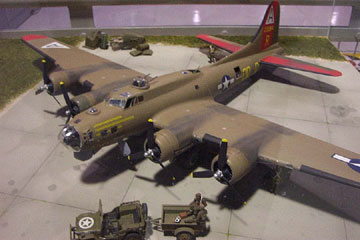 t
resulted in Boeing eventually registering the name Flying Fortress.
t
resulted in Boeing eventually registering the name Flying Fortress.
Boeing B-17 Triumph and Disaster:
On 20 August 1935 the impressive aircraft, unpainted except for US Army Air Corps rudder stripes and civil registration X13372, flew nonstop to Wright Field at an average faster than the maximum possible speed of its twin-engine rivals. But on the first officially observed flight before the USAAC evaluation officers, on 30 October 1935, the great bomber took off, climbed far too steeply, stalled and dived into the ground, bursting into a ball of fire. The accident was caused entirely by someone having omitted to remove the external locks on the elevators, and though the immediate winner of the official trials had to be the Douglas B-18, the much greater potential of the great Boeing bomber resulted in a service-test order for 13, designated Y113-17, placed on 17 January 1936.
These had many changes, especially to the landing gear, armament and in having 930-hp Wright Cyclone engines instead of 750-hp Pratt & Whitney Hornets. In 1937 the machines were delivered to the 2nd Bombardment Group at Langley Field, which subsequently flew almost 10,000 hours with no serious trouble and did more than any other unit in history to solve the problems of long-distance bombing, especially at high altitude. A 14th aircraft was built as the Y1B-17A with engines fitted with General Electric turbo-superchargers, which increased the speed from 256 mph to 311 mph and raised the operating height to well over 30,000 ft.
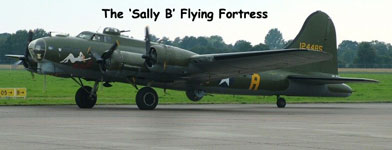
Results with the B-17 (as the Y1B was called after its test period was complete) were so good the USAAC not only fought: for massive production numbers, in the teeth of opposition from the US Navy, but also with Boeing collaboration even planned a next-generation bomber which became the B-29. US Navy anger was so intense that production numbers had to be scaled down, and the production batch of the first series model, the B-17B, numbered only 39.
These had numerous minor changes as well as a redesigned nose and larger rudder. They were the first aircraft in the world to enter service with turbo charged engines. The B-17B entered service in 1939 and was the fastest, as well as the highest flying, bomber in the world. The US Army Air Corps had by this time embarked on a major program of perfecting long-range strategic bombing by day, using the massed firepower of a large formation to render interception hazardous. It was expected that, because of the B-17's speed and height, opposing fighters would be hard-pressed to keep up and would present an almost stationary (relative to the bombers) target that could be blasted by the fire from hundreds of machine-guns.
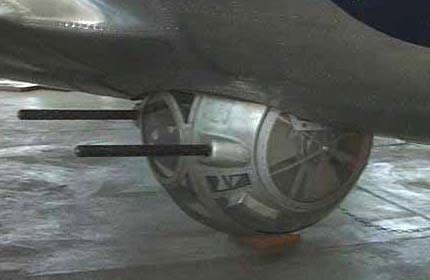
|
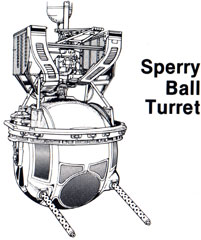
|
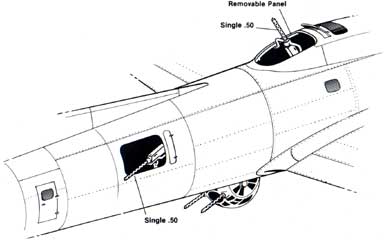 |
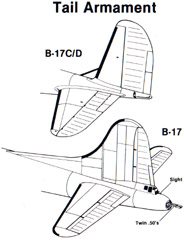
|
Boeing and Wright Field continued to improve the B-17 and in 1939 a further 39 were ordered under the designation B17C. These were much heavier, weighing 49,650 lb compared with about 43,000 lb for a B-17, because of increased armour, self-sealing tanks, heavier defensive armament (with twin 0.5-in/12.7-mm guns above and in a new ventral 'bathtub', twin 0.3-in/7.62-mm guns in the nose and new flush side gun positions) and extra equipment. Despite the greater weight, the fitting of 1,200-hp engines made this the fastest of all versions, with a maximum speed of 320 mph. In spring 1941 a batch of 20 was assigned to the RAF, following 15 months of negotiations which finally resulted in the aircraft being supplied in exchange for complete information on their combat performance.
(This was prior to the 1940 Lend-Lease Act). As RAF Fortress Is they had a disastrous and mismanaged career which dramatically reduced their numbers to a handful (about nine) which were
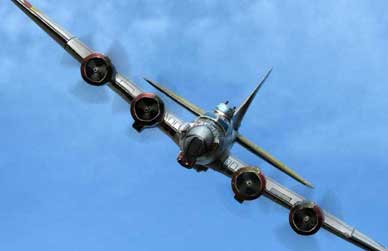 |
Here is a photo of your B17 model recolored as my Uncle's plane. I also (in addition to the coloring) fixed the running lights, the waist guns are now offset, and the propellers are made smaller. The cheek guns should be offset, but are not yet. Oh, and I scaled it to half your scale. The model drawing is of course yours if you like, it was drawn to take advantage of some silvered cardstock I had on hand. You might remember that I had been wanting to try this model for years, and finally last summer bought a copy. Wishing you well in your endeavors to have fun with the business. Al Ansorge 1/12 |
transferred to Coastal Command and the Middle East.
A false start:
While Britain had three different four-engine heavy bombers
under development in 1940, it turned to the U.S. for more. As a result, 20 B-17Cs
were refurbished and equipped at Boeing to R.A.F. requirements. Initially, these
were to be provided as trainers, but there was so much political pressure to
use them in combat that they were rushed into service as a totally new and untried
weapon, a high-altitude precision bomber. The turbo supercharger permitted operation
at altitudes over 30,000 feet, nearly double what British bombers were then
using and a supposed protection from enemy anti-aircraft fire and intercepting
fighters. The American Norden bombsight was supposed to be capable of putting
"a bomb in a pickle a greatly exaggerated claim. The Norden was good, but
not that good. In any case, it was not use in the British operations with B-17C
"Fortress I's". The Norden sight was a recent U.S. Navy development
made available to the Army; the Navy wouldn't accept the risk of having a Norden
fall into enemy hands and refused to let the R.A.F. use it in 1941. The Army
substituted its own somewhat less effective Sperry sight.
The first "Fortress I" mission was scheduled for three Squadron 90 planes to bomb Wilhelmshaven, 400 miles away, on July 8, 1941. American military personnel and civil technicians in support had doubts as to the success of the operation; thirty thousand feet was 10,000 above the 20,000 that the U.S. Army felt was the optimum for the B-17 at the time. The mission was only moderately successful, with only one "Fortress" dropping bombs on the target, but all returned safely.
Major problems had been encountered from equipment freezing at high altitude. While the items had worked well at equivalent altitudes over American desert test centers, the more moist air over northern Europe provided an entirely different environment. A second raid was scheduled for July, and was intended to be a propaganda coup by putting three American-built bombers over Berlin, but an insurmountable storm front encountered en route forced the mission to abort. The following days saw ineffectual raids against the German cruisers "Scharnhorst" and "Gneisnau" at Brest and against Emden in Germany. The bombs missed their targets because of freezing difficulties. The first combat loss was over Norway on September 8. One other was reported missing in action later.
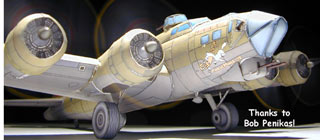 Further extensive internal improvements, a new electrical system
and engine-cowl cooling gills, led to the B-17D, of which 42 were
ordered in 1940. This was the latest model in service at the time
of Pearl Harbor (7 December 1941) when 30 were destroyed on the
ground at Hickham Field and at Clark Field, Philippines, the following
day. But by this time Boeing had developed a visually different
model which incorporated all the lessons learned in World War
2 in Europe. Called Boeing 2990, it entered US Army Air Force
service in December 1941 as the B-17E. Its most striking change
was the much larger tail, with a giant dorsal fin and long-span
tailplane giving better control and stability at high altitude.
Further extensive internal improvements, a new electrical system
and engine-cowl cooling gills, led to the B-17D, of which 42 were
ordered in 1940. This was the latest model in service at the time
of Pearl Harbor (7 December 1941) when 30 were destroyed on the
ground at Hickham Field and at Clark Field, Philippines, the following
day. But by this time Boeing had developed a visually different
model which incorporated all the lessons learned in World War
2 in Europe. Called Boeing 2990, it entered US Army Air Force
service in December 1941 as the B-17E. Its most striking change
was the much larger tail, with a giant dorsal fin and long-span
tailplane giving better control and stability at high altitude.
Armament was completely revised, with paired 0.5in (12.7-mm) guns in a powered turret behind the cockpit, in a ventral turret at the trailing edge, and in a new manual turret in the tail. Another pair of guns could be fired by hand from the roof of the radio compartment, and with a single hand-aimed gun at each waist position this made a total of 10 heavy machine guns, plus two 0.3-in (7.62-mm) guns aimed from the nose. Further improvements in armour and equipment all helped to increase gross weight to 54,000 lb, so cruising speed inevitably fell from 231 to only 210 mph. This was the first B-17 in large-scale production, and deliveries totaled 512 including 45 sent to the RAF as Fortress IIA.
On 30 May 1942 Boeing flew the first B-17F with
many further changes which allowed gross weight to soar to 65,000
lb with a potential bomb load for short ranges of 20,800
lb, though on normal combat missions the load seldom
exceeded 5,000 lb. The only obvious external change
on the F-model 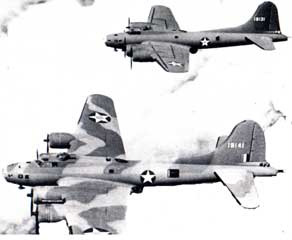 was
the more pointed nose molded in one piece of Plexiglas. This
type went into production not only at Boeing but also in a great
nationwide pool with assembly lines at Douglas (Long Beach) and
Vega (a Lockheed subsidiary at Burbank). Boeing built 2,300 of
this model, and Douglas and Vega added 605 and 500.
was
the more pointed nose molded in one piece of Plexiglas. This
type went into production not only at Boeing but also in a great
nationwide pool with assembly lines at Douglas (Long Beach) and
Vega (a Lockheed subsidiary at Burbank). Boeing built 2,300 of
this model, and Douglas and Vega added 605 and 500.
With the B-1 7E and B-1 7F the US 8th Air Force built up its early strength in England. The first combat mission was flown on 17 August 1942 by 12 B-17Es of the 97th Bomb Group against a marshalling yard near Rouen. This was the small beginning to the greatest strategic striking force ever created, which was to lead to a three-year campaign in the course of which 640,036 US tons of bombs were dropped on German targets and, at the cost of grievous losses, supremacy was eventually obtained even over the heart of Germany in daylight.
By far the most numerous model of B-17 was the last. The B-17G was the final result of bitterly won combat experience and among other changes it introduced a chin turret firing ahead with twin accurately aimed 0.5-in (12.7-mm) guns. Previously German fighters had brought down many B-17s with head-on attacks, but the B-17G, with the chin turret plus two more 0.5-in (12.7-mm) cheek guns (and possibly the dorsal turret) firing ahead was a tougher proposition. The B-17G had enclosed waist positions, much greater ammunition capacity and, like most B-17Fs, paddle-blade propellers to handle the greater weight and prevent too much deterioration in performance. Most B-17Gs had improved turbochargers which actually increased service ceiling to 35,000 ft, but these bombers were so heavy the cruising speed fell to 182 mph (293 km/h). This increased the time the gigantic formations were exposed to rocket and cannon attack by the German fighters; conversely, of course, it lengthened the time the B-17 guns had to destroy those fighters.
Electronic Versions
Boeing built 4,035 B-17Gs. Douglas 2,395 and Vega 2,250, a total of 8,680. The total of all versions was 12,731, of which 12,677 were formally accepted by the USAAF. The B-17F was used by the RAF as the Fortress 11 and the B-17G as the Fortress 111, the main user being Coastal Command. Some were modified with a radar in place of the chin or ball turret, and for use against surfaced U-boats a 40-mm Vickers S gun was fitted in a nose mount. The B-1 7G was also the chief heavy carrier of special electronics for the RAF's No. 100 Group, Nos 214 and 223 Sqns being the pioneers of spoofing, decoy, jamming and intelligence missions with 19 distinct types of electronic or related device including the superpower emitters coded 'Jostle' and 'Piperack'. The only electronic device often carried by USAAF B-17s was the early H2X or Mickey Mouse radar used for bombing through cloud. This set's scanner was normally housed in a retractable radome under the nose or in place of the ball turret.
The ball turret, a retractable installation on the B-24 Liberator,
was fixed on the B-17. Originally the B-17E had been fitted with
a drum-type ventral turret aimed by a gunner in the fuselage,
sighting via a periscope. This was soon replaced by the aptly
named spherical ball-turret made by the Sperry company. The gunner
had to climb into this and squat with his knees fully bent for
perhaps five or six hours. A belly landing could flatten the ball-turret
and its occupant, and there were many occasions when because of
combat damage the turret doors jammed and a belly landing would
have killed the ball-turret gunner. Normal procedure for a belly
landing was to get the gunner out and then, using special tools,
disconnect the whole turret from the aircraft and let it fall
free. On one occasion a B-17 returned with severe combat damage
and jammed landing gears, and near its home airfield it was found
that the special tools were not on board. The executive officer
of the station was notified by radio; within minutes he had grabbed
a set of tools and taken off. For more than two hours he circled
in close formation with the stricken B-17 trying to pass the tools
on the end of a cable. He succeeded.
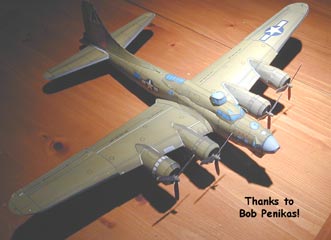 In 1942 various special versions of B-17 were produced by Vega
to serve as escort fighters. The first was the second Vega-built
B-17F, which was rebuilt as an XB-40 with many armament changes
including a second dorsal turret and a bomb bay full of ammunition.
It was followed by 20 YB-40s with even heavier armament including
quadruple gun mounts at nose and tail and a total of as many as
30 guns of up to 37- or 40-mm caliber! So heavy were these 'fighters'
that they could not even keep formation with the B-17 bombers,
and though they flew nine combat missions in 1943 they were judged
unsuccessful.
In 1942 various special versions of B-17 were produced by Vega
to serve as escort fighters. The first was the second Vega-built
B-17F, which was rebuilt as an XB-40 with many armament changes
including a second dorsal turret and a bomb bay full of ammunition.
It was followed by 20 YB-40s with even heavier armament including
quadruple gun mounts at nose and tail and a total of as many as
30 guns of up to 37- or 40-mm caliber! So heavy were these 'fighters'
that they could not even keep formation with the B-17 bombers,
and though they flew nine combat missions in 1943 they were judged
unsuccessful.
In 1943 Boeing converted the ninth production B-17E to have liquid-cooled Allison engines of 1,425 hp each; these naturally resulted in improved performance but it remained a one-off prototype (designated XB-38). Another unique machine was the plush XC-108 VIP transport which began life as a B-17E but was converted for General Douglas MacArthur, supreme commander in the Pacific, with a comfortable interior for 38 passengers. The XC-108A was a similar conversion but for cargo, with a large door on the left side. The YC-108 was a VIP conversion of a B-17F, and the XC-108B was a B-17F tanker which ferried fuel' over the hump' from India to China.
B - 17G
The B-17G was the most proliferate variant of the Flying Fortress,
with 8,680 being built by the members of the B.V.D. pool - 4,035
by Boeing; 2,395 by Douglas, and 2,250 by Lockheed Vega. Basically
the B-17G was almost identical to the late B-17F. In fact, some
of the early G models were re designated as Fs. The major distinguishing
feature was the addition of the Bendix chin turret, although this
feature was found on the last 86 Douglas-built B-17Fs. Many of
the early Gs also retained the standard F model nose window configuration
and armament. The bulged cheek windows were added beginning
with the Douglas block-25, Vega block-35, and Boeing block-60
aircraft.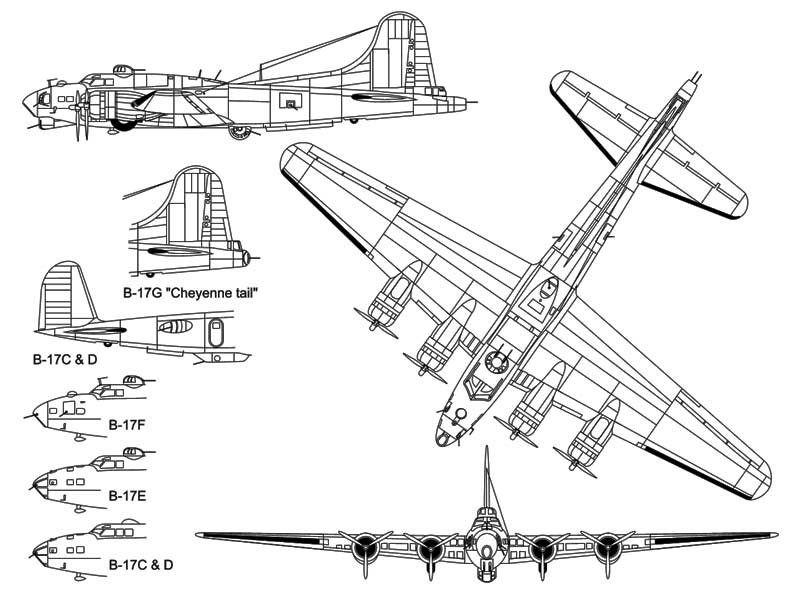
Various types of waist gun mounts and windows were used throughout the G series with the early G models retaining the side by side waist gun positions. However, beginning with the Boeing B-17G-50-BO, the waist gun positions were staggered so that the gunners would not interfere with each other during the heat of battle. The starboard waist gun position was moved forward three full fuselage frames. The .50 caliber machine guns were on K-6 gun mounts, and the window itself was now completely enclosed keeping the gunners warmer and more comfortable at combat altitudes. Finally, an all new tail turret design was developed by the United Air Lines Modification Center at Cheyenne, Wyoming. The new turret provided much greater gun elevation and included a completely redesigned gunners enclosure with much larger windows. The tail gunner now sighted through a reflector gun sight in place of using the ring and bead Enotype found on earlier B-17 tail gun installations. Known as the Cheyenne tail turret, it was installed on all B-17Gs beginning with the Douglas block-45, Vega block-55, and Boeing block-80.
The B-17G flew for the first time on 21 May 1943, with the first aircraft being delivered on 4 September 1943. On 29 July 1945, the last of the 8,680 B-17Gs rolled off the Vega assembly line. The British Royal Air Force received 85 Fortress Ills (B-17Gs), which were assigned to both Bomber Command and Coastal Command. Bomber Command's No. 100 Squadron used several highly modified Fortress Ills for night electronic warfare and pathfinder duties.
They had a large chin bubble that housed H2S Bombing Through Overcast (BTO) radar and were used as radar jamming aircraft to help defend the strike force against both German night fighters and anti- aircraft. This same BTO radar, sometimes referred to as 'Mickey Radar', was mounted in place of the ball turret on some Army Air Force B-17Gs. Coastal Command Fortress Ills had a search radar mounted in place of the ball turret and were used for anti-submarine patrol Duties.
Even the Luftwaffe used B-17Gs. Captured Fortresses were used by KG 200 for clandestine operations, transporting agents, dropping supplies behind allied lines, reconnaissance, and the training of fighter pilots in the weaknesses of the Flying Fortress.
The B-17G saw action in three wars after World War Two. The first mission of any type during the Korean War was flown by a SB-17G. The first missions flown over North Korea were flown by aerial mapping RB-17Gs flying from Clark Field, The Philippines. And Israel used three B-17Gs to conduct offensive bombing raids in the 1948 war. These raids were especially interesting since the planes had been delivered to Israel without bombsights or bomb racks. The Israeli crews sometimes dropped the ordnance manually. In the mid-1950s, a couple of all Black B-17Gs were used to drop agents into an obscure little country known as North Vietnam.
The early B-17G retained the nose window configuration of the early B-17F. All nose guns were deleted in favor of the new Bendix chin turret. Note the very unusual B-17F bombardier trainer in the background. (AFM)
Camouflage paint was discarded by Army Air Force in late 1943. The Vega-built block -25 B-17Gs were the first to roll off the assembly line in natural metal. Although combat crews were initially afraid of being singled out by Luftwaffe fighters, no significant increase in losses resulted from the natural me finish. Note the anti-g.lare panels on the inside of the engine nacelles. (AFM)
A strange wartime rebuild was the Aphrodite cruise missile conversion in which war-weary B-17Fs and B-17Gs were stripped of everything that could be removed and packed with 10 tons of Torpex, a British explosive with 50 per cent greater blasting power than Amatol. Under the project names 'Perilous' and 'Castor' many tests were made, the take-off being made by two pilots in an open cockpit who then baled out to leave the Fortress (official designation BQ17) under radio control from an accompanying aircraft such as a B-17 or PV-1. Though 11 combat launches were made on German targets the idea was judged rather too perilous after one BQ-7 had made a crater over 100 ft in diameter in England and another had broken radio link and orbited a British city before heading out to sea.
In 1944 British experience was used in converting B-17Gs into B-17H air/sea rescue aircraft with an airborne lifeboat and search radar; post-war these were designated SB-17G. Other post-war variants included the CB-17 and VB-17 transports, TB-17 trainers, radio-guided QB-17 versions and DB-17 radio director aircraft. These soldiered on with the USAF after its formation in 1947, and also with various minor air forces. Many-others became civil airliners.
No history of the B-17 would be complete, however, without reference to its exciting cloak-and-dagger operations with I/KG 200, the clandestine Gruppe of the Luftwaffe whose story has only recently come into the open. The B-17, mainly the G model, was its most important captured type, used for numerous long-range missions under the cover designation Dornier Do 200. These machines carried out daring operations throughout Europe from Norway to Jordan and the Western Desert. They were not specifically intended to deceive the Allies, and wore German markings; they were used just because they were better for the job than any German aircraft!
It is difficult to praise any Allied aircraft more highly. It is undoubtedly due to the B-17 that the Allies gained air supremacy in Europe towards the end of the war.
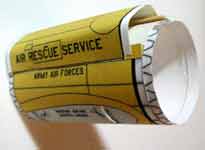
|
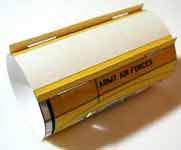
|
|
"I pieced together the fuselage so that the splice is a larger panel under the top. And cut the two yellow, fold-up flaps to help in both gluing and disguising the separation line. In the photographs the white showing down in line is actually yellow." David Pileggi |
|
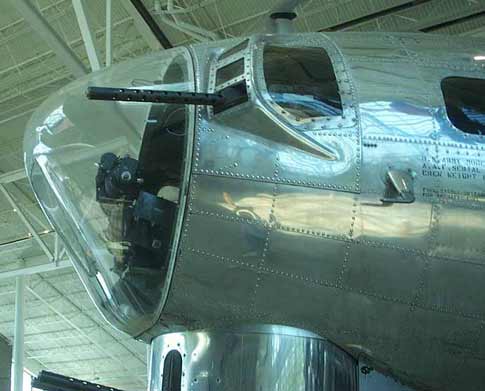 |
|
| These are photos of the B-17 on display at the Evergreen Air Museum, McMinnville, Oregon |
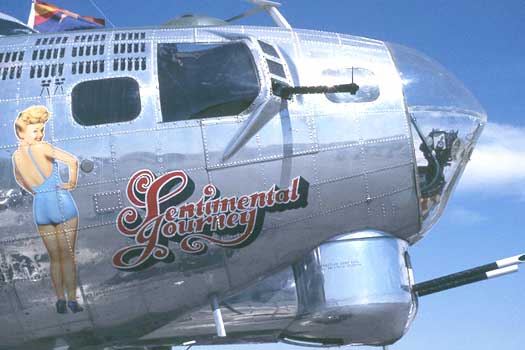
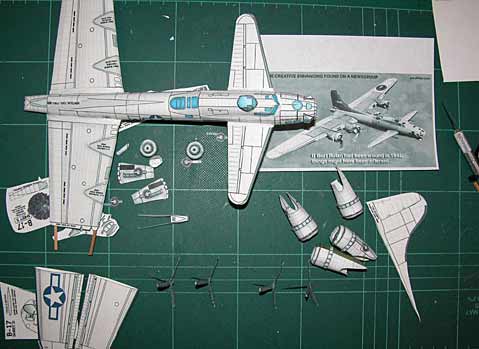
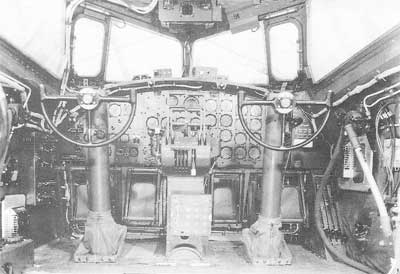 |
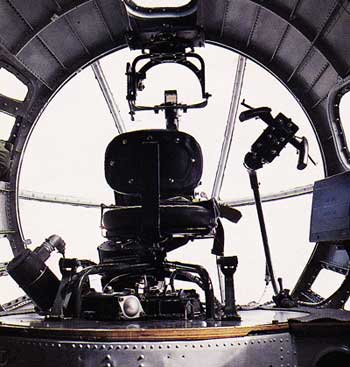 |
| Cockpit of the Boeing B-17 Flying Fortress. | Bombardier's seat of the Boeing B-17 Flying Fortress. |
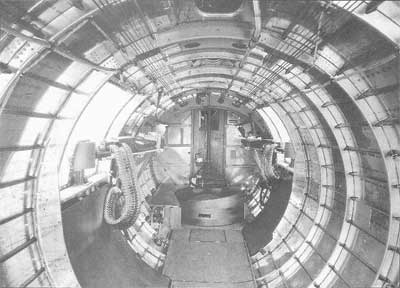 |
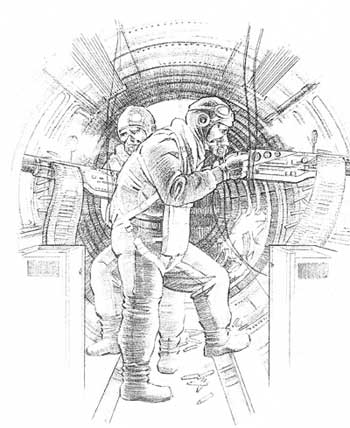 |
| Side Gunners of the B-17 Flying Fortress. | |
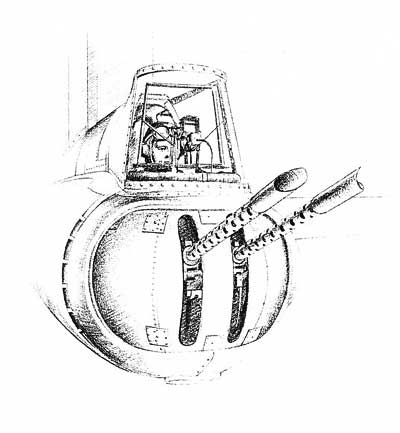 |
Sketch of the Rear Gunner of the B-17 Flying Fortress. |
Specifications for the Boeing B-17 Flying Fortress
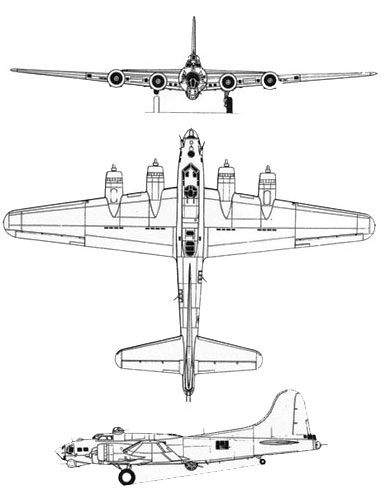 |
Crew: 10: Pilot, co-pilot, navigator,
|
 |
||
| A: The Norden bomb sight with which the B-17 was equipped was reputed to be able to "drop a bomb into a pickle barrel" from 10.000 feet. | B: Boeing was among the pioneers of stressed skin design, and the B-17 was among the earliest all-metal monoplane heavy bombers to enter service. | C: Fortresses were defended by as many as 13 heavy machine guns. The vulnerable undersides were covered by a ball turret and by the two waist gunners. |
| D: The B-17 was immensely strong. Aircraft managed to return to base with severe battle damage, and the big bomber could still fly even with large sections of the huge vertical tail shot away. | E: The B-17 was powered by reliable Wright Cyclone radial engines. They were turbocharged, which enabled the Fortress to operate at higher altitudes than its European contemporaries. | F: B-17s were not originally fitted with tail guns. A tail gunner's position was added to the B-17E and all subsequent models. |
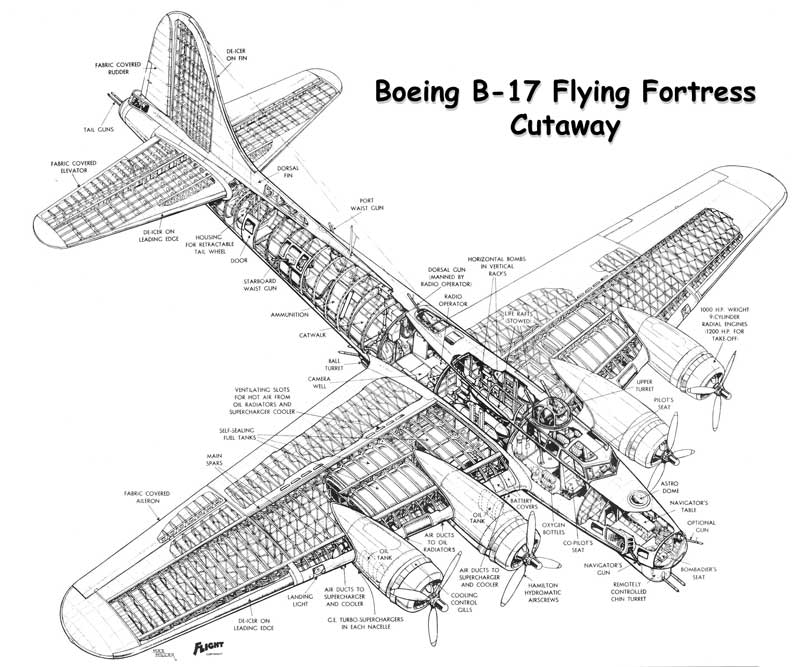 |
This fabulous B-17 cutaway comes in a 8.5x11 PDF for FREE included in your MyModels folder! |
And now for the crashes!
